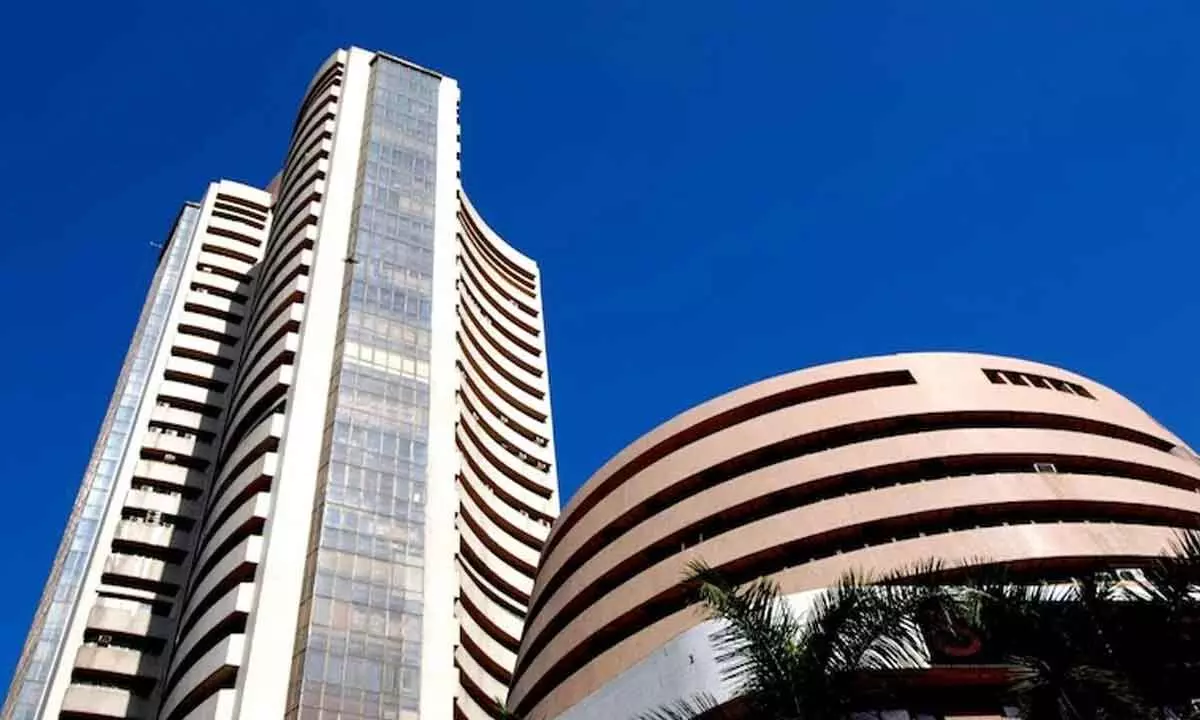Despite FII volatility, long-term outlook remains positive
Double-digit corporate ROE; inflows into open-ended equity funds remained in the positive zone for the 41st month in a row
image for illustrative purpose

Unnerved by fears of US recession, unwinding of yen carry trade, geopolitical tensions in Middle East, mixed quarterly earnings, status quo RBI policy outcome and unabated FII selling; the domestic stock market witnessed highly volatile week extending the fall for the second consecutive week. BSE Sensex declined 1,276.04 points or 1.57 percent to close at 79,705.91 points, while NSE Nifty shed 350.2 points or 1.41 percent to finish at 24,367.50 points. The broader indices broke a two-week outperformance and ended lower, in line with main indices. The BSE Smallcap Index and the BSE Midcap index shed two per cent and one per cent, respectively. FIIs sold equities worth Rs19,139.76 crore, however, DIIs bought equities worth Rs20,871.10 crore during the week ended. FII holding in India is already at a 10-year low. With stable government in place along with one of the fastest economic growths, double-digit corporate earnings growth and double-digit corporate ROE; FIIs can’t remain out for a long period of time say observers. While short-term volatility in FII flows is expected, the long-term outlook remains positive. The Indian rupee touched fresh record low of 83.96 during the week and ended 21 paise lower against the US dollar at 83.95. It is pertinent to observe that despite volatility and emerging weakness in the markets, inflows into open-ended equity funds have remained in the positive zone for the 41st month in a row. Monthly gross systematic investment plan (SIP) inflows hit a fresh record high of Rs23,332 crore during July against Rs21,262 crore in June. However, open-ended equity mutual fund inflows slipped 8.61 percent to Rs37,113.39 crore during July on a fall in investments in large-cap and mid-cap funds, after a surge of 17 percent to Rs40,608.19 crore in June, a record high. Observers say that the retail investors are now understanding that volatility is part of the long-term wealth creation journey. The share of financial assets has been increasing rapidly and within financial assets and mutual fund market share is relatively high. Comment on recent volatility: Financial marketers grab and hold your attention online by playing on your emotions, especially fear and anger. Market strategists and online pundits always have explanations for stock-market volatility. That doesn’t mean you have to believe them. Don’t have to try to make sense of markets that make no sense. And you certainly shouldn’t listen to anyone trying to make you panic.
Follow market trends and history. Don’t speculate that this particular time will be any different. For example, a major key to investing in a specific stock or bond fund is its performance over five years.
F&O/ SECTOR WATCH
Mirroring the hyper volatility triggered by global cues in the cash market, the derivatives segment also witnessed strong volume and price moves in several stock futures. With the Nifty shedding around 1.5 per cent and the Bank Nifty falling by over 1.5 per cent; fear and caution enveloped traders. In the option segment, Nifty options indicated significant Call open interest at the 25,000 and 24,400 strikes, while the substantial Put open interest was observed at the 24,300 and 24,000 strikes. As for the Bank Nifty, significant Call open interest is at the 50,500 and 51,000 strikes, while the highest Put open interest was seen at the 50,000 strikes. Implied volatility (IV) for Nifty’s call options settled at 14.82 per cent, while put options conclude at 15.67 per cent. The India VIX, a key market volatility indicator, closed the week at 16.60 per cent. The Put-Call Ratio of Open Interest (PCR OI) stood at 1.38 for the week. The Bank Nifty managed to close above the 50,000 psychological level, while the Nifty dipping below the psychological level of 24,000 during the course of week, traded above the 24,000 mark by the weekend. The strong support area for Nifty is in zone of 24100-24000 while on higher side, 24500-24600 zone will likely to act as strong hurdle for Nifty. Traders should closely monitor these levels and plan their trades accordingly. Focus on stock-specific actions, adopting a selective approach. Since market movements were primarily driven by global cues, it’s essential to stay updated on those developments as well. Expectedly, stocks from defensive sectors like Pharma and FMCG outperformed the market, while profit-taking was seen in the Metal, PSU Banks and Financial services sectors. Stock futures looking good are ABB, Alkem, Coromandel, Chambal Fertilisers, Muthoot Finance, MCX and Zydus Life. Stock futures looking weak are Balkrishna Inds, Container Corporation, JK Cement, Shree Cement, SAIL and TVS Motors.
(The author is a senior maket analyst and former vice- chairman, Andhra Pradesh State Planning Board)

